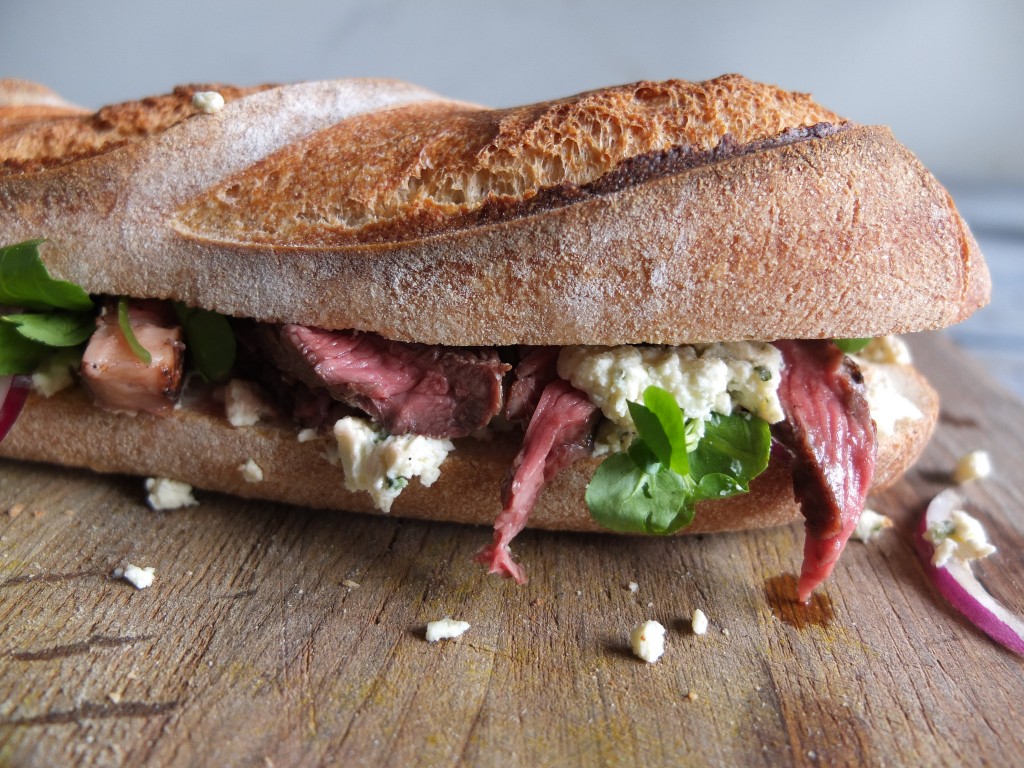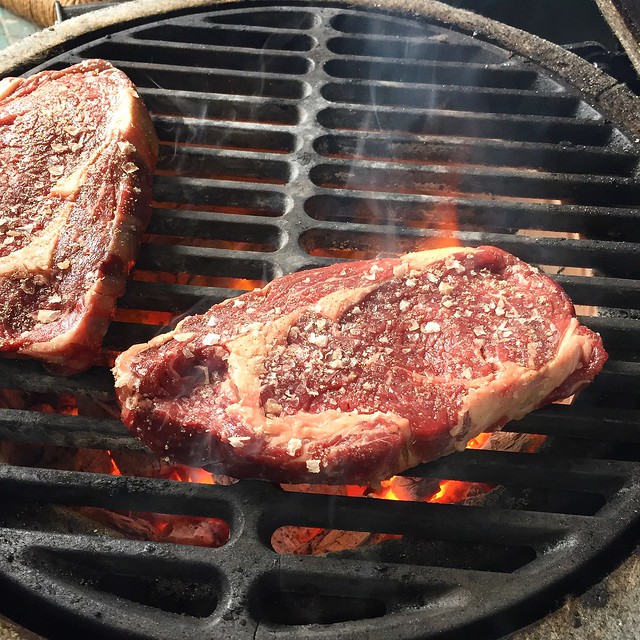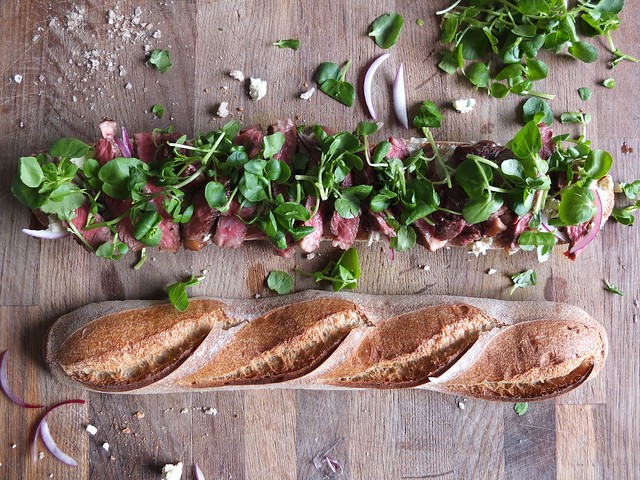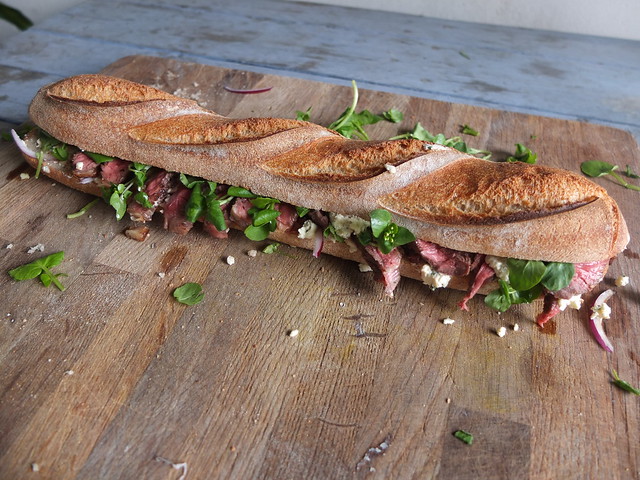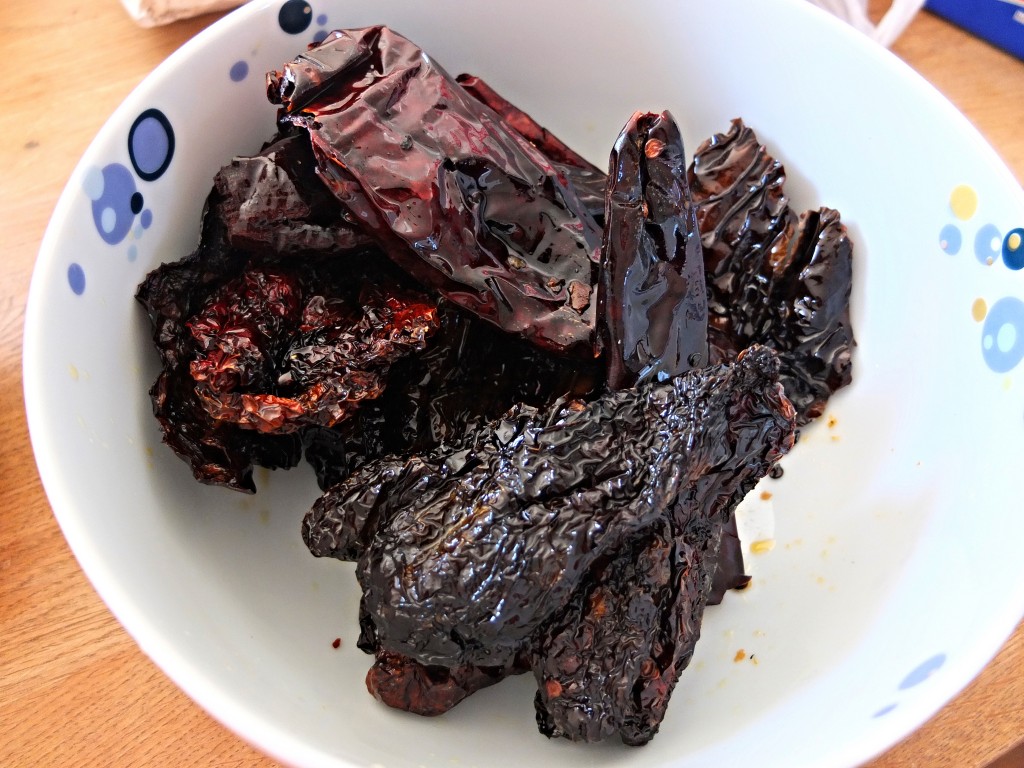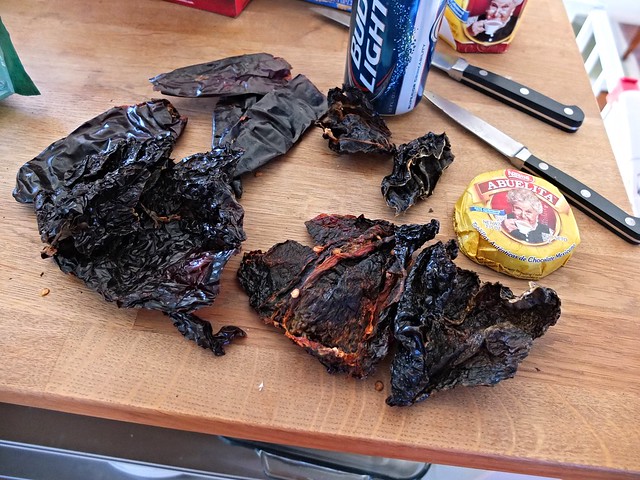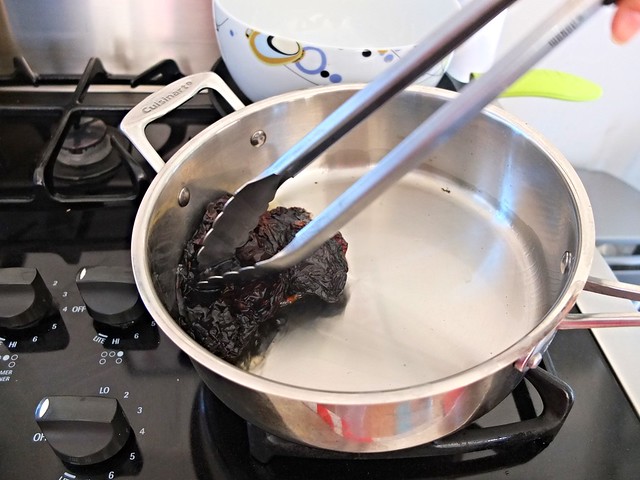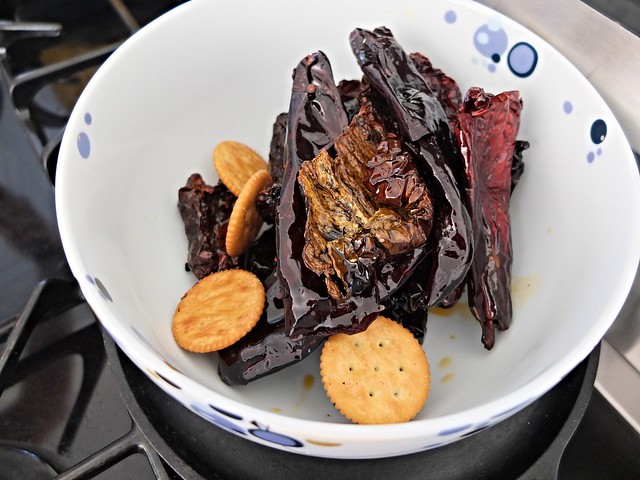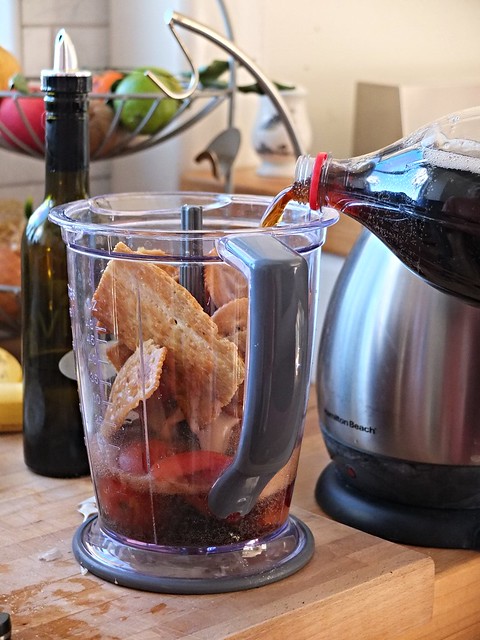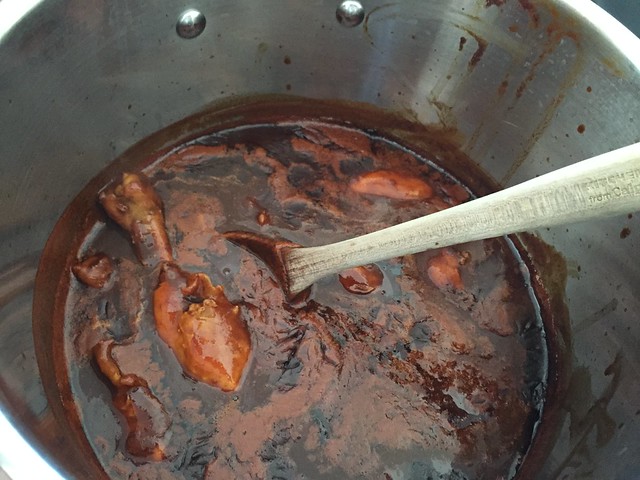I, like you, have spent many years attempting to perfect the steak sandwich. At first I made all the silly mistakes because I didn’t know how to cook a perfect steak, or I was using the wrong bread, or the wrong condiments. Then came the phase of adding too many bits and pieces, like tomatoes (watery and too far into BLT territory) or worse, peppers (bit TGI Friday’s). Then there’s the caramelised onion phase, which is just Ready Steady Cook circa ’93. They’re just horribly jammy. I mean you may as well just go ahead and put some goats’ cheese and thyme in there while you’re at it. You what? Oh you didn’t. Come on now.
The mustard phase follows next, which is fine and dandy because it does, in fairness, taste great. Sometimes I even whack a couple of different types in there – English for heat, wholegrain for tang. There’s horseradish, of course, but it does take things somewhat in the direction of Sunday lunch in a sandwich, and that never really feels right unless it’s actually your Sunday lunch in a sandwich, in which case, rock on.
So anyway in the end I worked it out, and so, by the way, did the steak restaurant Hawksmoor, who now use cream cheese in their ‘7 year steak sandwich’, so called because it took them seven years to get it exactly right. Sound familiar? Uh huh. Well anyway now I’ve nailed it and I’ve nailed it because of the existence of flavoured cream cheese.
I’m not going to wang on about the combination of hot steak and cream cheese because I’m sure your beautiful little brains can conjure that mental imagery without much prompting. It just falls to me then, to stress that for this you must be generous with the Boursin. You need a whole pack for this baguette. No skimping now. Here’s what you do.
Take two very good 225g rib -eye steaks, season highly and cook on a BBQ for about 2.5 mins each side, flipping every 30 seconds (or cook to your liking).

Get yourself a baguette of exceptional quality. Split it, and spread one half with shallot and chive Boursin (or garlic and herbs), and I mean GENEROUSLY. Don’t mess about. Use the whole packet.
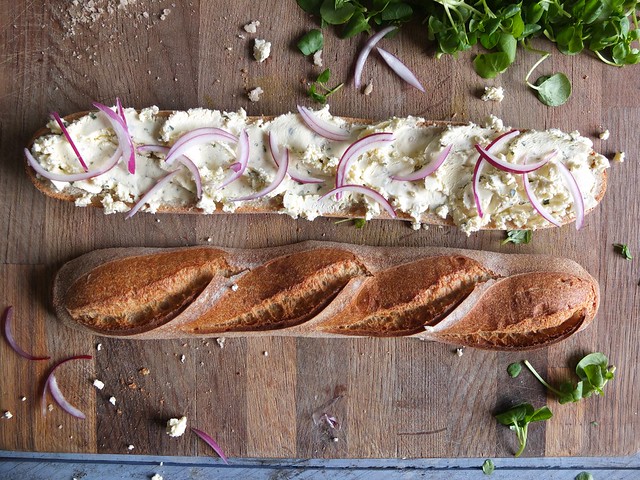
Thinly slice half a red onion and sprinkle it artfully on top.
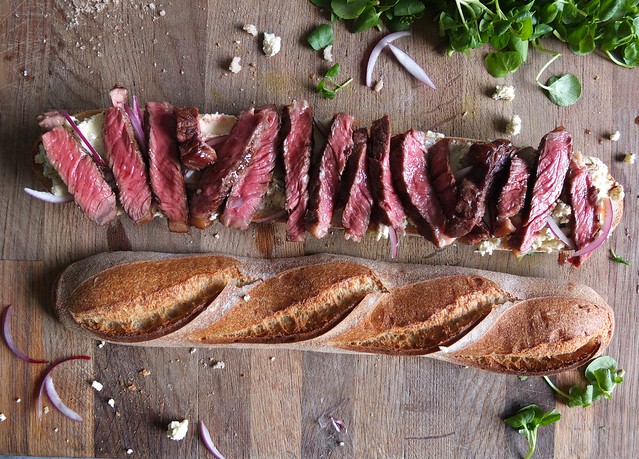
After your steak is cooked and rested, slice it and arrange on top of the Boursin. Pour over the juices that have accumulated on the resting plate.
Now you have the best steak sandwich ever, and it is massive. Slice and serve.
